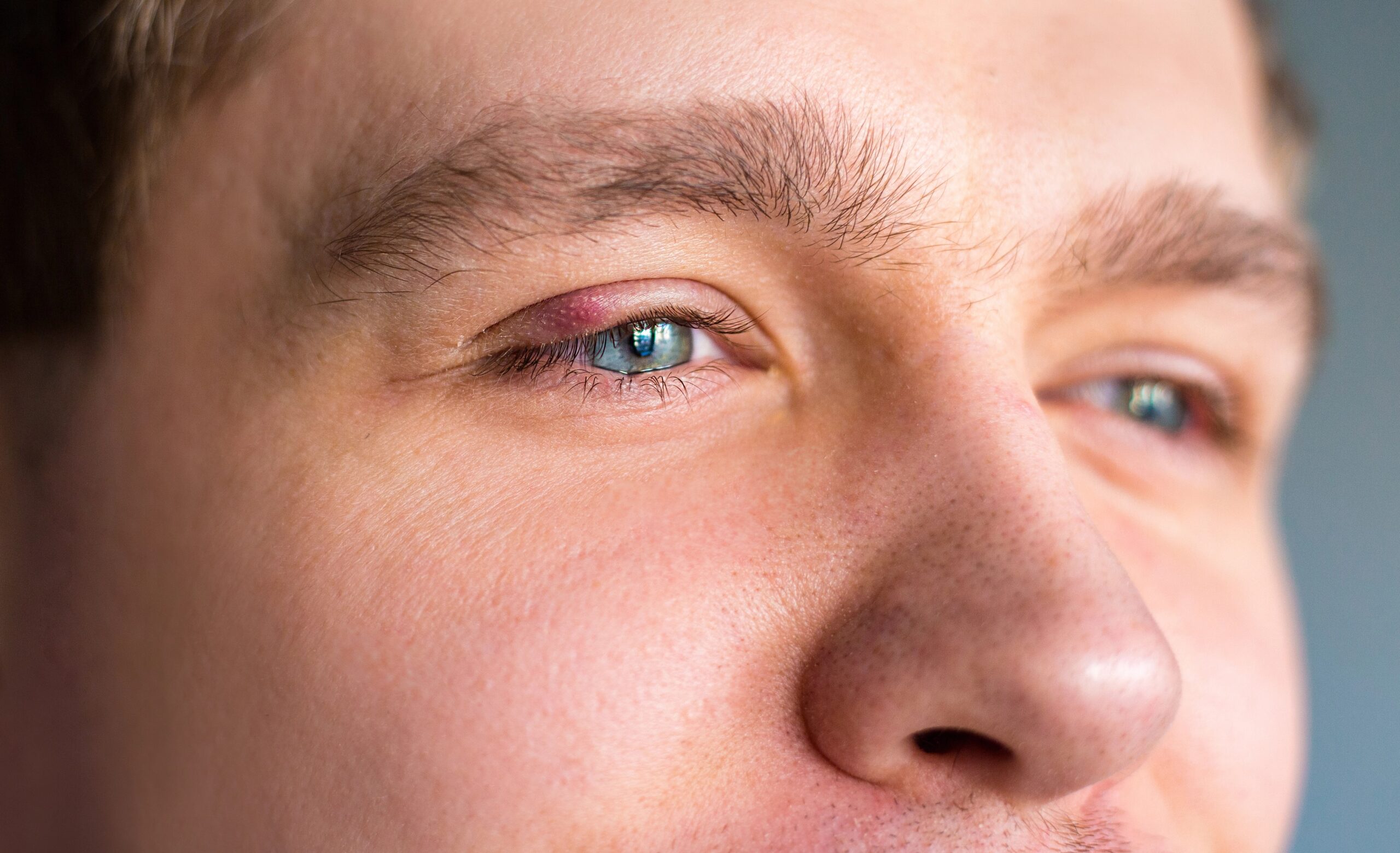Did you wake up with a perplexing bump on your eyelid? Turning to your old pal Google, you were likely confronted with two different possible explanations: either it’s a stye or a chalazion. These two conditions look quite similar, but they actually have distinct causes and unique symptoms. Most importantly, they require different treatments. So, if you’re struggling to understand the difference between a stye and a chalazion, make an appointment with your eye doctor. Once you have a diagnosis, you can pursue the proper treatment and eliminate that annoying little bump.

What Is a Stye?
A hordeolum, more commonly known as a stye, is a painful red bump that forms along the edge of the eyelid. Typically, styes are found either at the base of an eyelash or inside the eyelid. They’re caused by infected oil glands or hair follicles, with the bacteria Staphylococcus aureus being the most common culprit for these infections. If you have a stye, you might notice the following symptoms:
- A red, swollen lump on your eyelid
- Pain or tenderness
- Pus or discharge
- Crusting around the eyelid
- Sensitivity to light
- Watery eyes
What Is a Chalazion?
A chalazion is a painless, slow-growing lump on the eyelid that develops when a meibomian gland becomes blocked. It’s not the result of an infection; it’s simply inflammation resulting from a buildup of oil. If you have a chalazion, you might notice the following symptoms:
- A firm but painless lump on your eyelid
- Mild swelling
- Blurred vision (if the chalazion is large enough to press on the eye)
The Difference Between a Stye and a Chalazion
As you might have noticed reading through those descriptions, while they look similar, the difference between a stye and a chalazion is actually quite clear. There are some key differences between these two eyelid issues:
- Styes are caused by bacteria. Chalazia are caused by blocked oil glands.
- Styes are typically tender and may be painful. Chalazia are painless.
- Styes appear red and swollen and may excrete pus. Chalazia are firm lumps beneath the skin.
- Styes are located near the base of an eyelash or inside the eyelid. Chalazia are deeper in the eyelid.
How to Treat Styes and Chalazia
Surprisingly, despite their many differences, the first line of treatment for both conditions is typically the same: a warm compress. By applying a warm compress for 10–15 minutes several times each day, you can encourage the lump to drain and heal.
If this doesn’t work, it’s important to visit an eye doctor. If you have a stye, your doctor may prescribe antibiotic ointments or eye drops. If those don’t help, they may drain the stye using sterilized equipment. If you have a chalazion, your doctor may also need to drain the bump. In addition, they might inject steroids to reduce inflammation.
How to Prevent Styes and Chalazia
To avoid styes and chalazia in the future, wash your face with a mild cleanser every day, and avoid touching or rubbing your eyes. If you wear contact lenses, always clean them properly. If you wear makeup, always remove it before sleeping and regularly replace your old products.
_____
Styes and chalazia are both relatively common and can often be treated with warm compresses at home. However, if you aren’t noticing any difference with warm compresses, or if the condition is painful or affecting your vision, contact an eye doctor. Proper treatment can prevent complications and ensure quick healing.
If you live in southwest Missouri, stop by Heffington’s. Since 1975, the Heffington family has assisted the Springfield community with top-quality eye care and affordable eyeglasses and contacts. To learn more about our products and services, please get in touch with us online, send an e-mail to asktheexperts@heffingtons.com, or give us a call at 417-869-3937 (Optiland location) or 417-882-3937 (House of Vision location).
